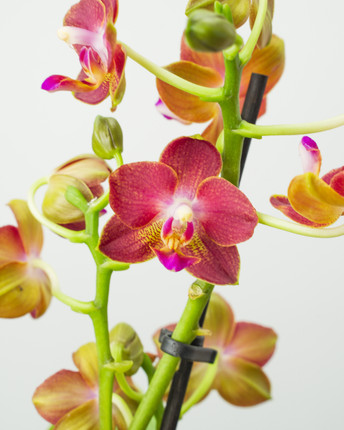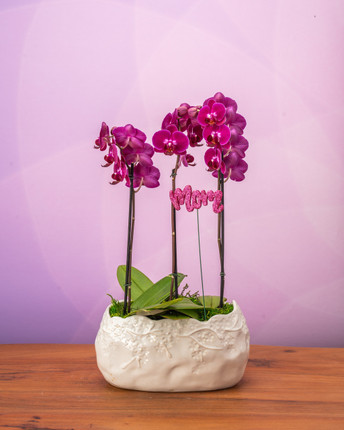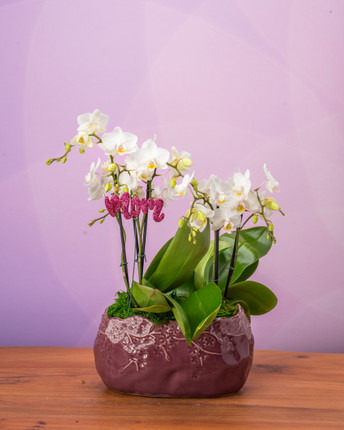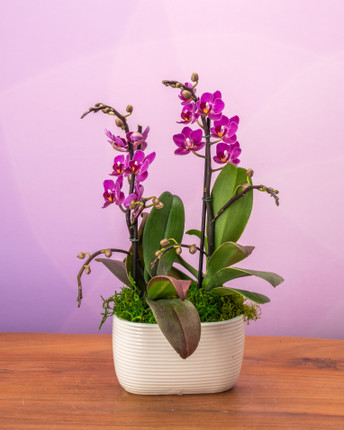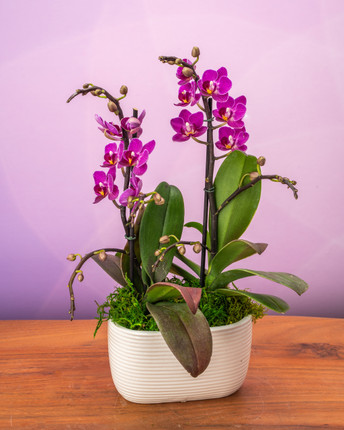Description
Phalaenopsis amabilis
Introducing our Multiflora Phalaenopsis White in Ecopot - the perfect way to add a touch of elegance and simplicity to your home decor! With its clean and classic white blooms, this orchid is sure to bring a sense of calmness and tranquility to any room.
Featuring multiple blooms, our Multiflora Phalaenopsis is a true showstopper that will produce long-lasting flowers for months to come, making it the perfect addition to your home or a thoughtful gift for a loved one.
Our eco-friendly pot not only looks beautiful but is also sustainable, making it an environmentally friendly choice that you can feel good about.
Plant Care
Watering:
Phalaenopsis Orchids prefer to be kept evenly moist but not overly wet. It's important to let the top layer of soil dry out slightly before watering again. When watering, it's best to do so in the morning and use room temperature or lukewarm water. Avoid getting water on the leaves or crown, as this can lead to rot. A good rule of thumb is to water about once a week, but this may vary depending on the humidity and temperature of your home.
Light:
Phalaenopsis Orchids prefer bright, indirect light. Avoid placing them in direct sunlight, as this can scorch their leaves. A good place to put them is near a north or east-facing window, where they can get plenty of bright, indirect light throughout the day. If the leaves start to turn yellow or brown, it may be a sign that they are getting too much light.
Fertilizing:
Phalaenopsis Orchids should be fertilized once a month during their growing season, which is typically from spring to fall. Use a balanced fertilizer specifically designed for orchids, and follow the instructions on the packaging carefully. Be careful not to over-fertilize, as this can damage the plant. If the leaves start to turn brown or the roots look dark, it may be a sign that you are fertilizing too much.
Repotting:
Phalaenopsis Orchids should be repotted every 1-2 years, or when the potting mix breaks down and becomes soggy. When repotting, use a specialized orchid potting mix, as regular potting soil can retain too much moisture and suffocate the roots. When removing the plant from its current pot, be careful not to damage the roots. Trim away any dead or damaged roots, and place the plant in its new pot. Water sparingly for the first few weeks after repotting, to give the plant time to adjust to its new surroundings.













